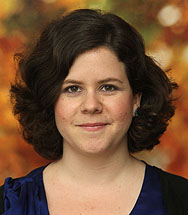“En el humor, el ingenio produce más adhesión que la caricatura”
Inés Olza, investigadora del proyecto ‘Discurso público’ del ICS, participa en el XI Seminario Internacional de Lengua y Periodismo, organizado por la Fundéu BBVA y la Fundación San Millán de la Cogolla e inaugurado por la reina Letizia

“Cuanto mejor es el humor, resulta menos ofensivo. El ingenio produce más adhesión que la caricatura”. Inés Olza, investigadora del proyecto ‘Discurso público’ del Instituto Cultura y Sociedad de la Universidad de Navarra, hizo estas declaraciones con motivo de su participación en el XI Seminario Internacional de Lengua y Periodismo, organizado por la Fundéu BBVA y la Fundación San Millán de la Cogolla e inaugurado por la reina Letizia. Tiene lugar los días 25 y 26 de mayo en el Centro Internacional de Investigación de la Lengua Española (Cilengua).
De acuerdo con la investigadora, “ciertos mecanismos cognitivos como crear escenarios inesperados –poner de fondo a un personaje la música de una banda sonora característica como Terminator-, situaciones imprevistas –poner al político como cocinero, ama de casa…- o rupturas de expectativas pueden resultar mucho más eficaces que los adjetivos ridiculizadores o los insultos”.
Con respecto al papel del humor en la información, tema de una de las tres mesas redondas en las que se articuló el seminario, aseguró que este recurso puede ayudar a que las noticias se transmitan mejor: “Capta nuestra atención y conecta automáticamente con nuestra empatía. El público hace dos ejercicios: inferir el dato objetivo que se quiere transmitir y reflexionar sobre cómo se nos está trasladando”.
Los límites del humor en la informaciónEn cuanto a los límites del humor en la información, destacó la importancia del pacto inicial. “Si en nuestro formato se aplica este recurso a todo, por ejemplo, a un amplio espectro ideológico, en principio los límites son amplios, siempre que no se atente contra el honor o que no se falte a la verdad”, indicó. “El problema –continuó- viene cuando en géneros en los que no hay un pacto de humor, como una tertulia política, este se introduce. Ahí se puede entender como aceptable o no”.
Por otro lado, subrayó que “hay cuestiones de las que por convención está más permitido reírse que de otras” y que “el comportamiento humano fluctúa entre la autocensura y la búsqueda de espacios de libertad”.
En ese contexto, recomendó “meterse en la escena del humor y autoparodiarse” para ganar legitimidad: “Si solo me río de otros, pierdo credibilidad porque no me aplico lo que digo de ellos”. Y también recomendó pasar de “reírse del otro” a “reírse con el otro”.
Por último, aludió a las posibilidades que plantean los distintos géneros periodísticos en lo que respecta al humor. “En el periodismo escrito hay menor posibilidad de hacer algo dinámico porque el producto es más estático. El discurso televisivo o radiofónico da más juego porque permite rectificar, añadir guiños, usar la entonación, hacer pausas…”, puntualizó.
Viñetas, programas de humor y recursos lingüísticosInés Olza hizo estas declaraciones en el marco del XI Seminario Internacional de Lengua y Periodismo, que se articula en torno a tres mesas redondas: La información, con humor entra, El humor y la creación del lenguaje y De la columna al tuit, pasando por las viñetas. En ellas se analizan aspectos sobre el papel del humor en la información y su evolución desde las columnas satíricas a las redes o los memes.
Las viñetas, los programas de humor, los recursos lingüísticos del humor y su aportación de nuevas palabras y expresiones y la necesidad de adaptar lenguajes y estilos a los distintos formatos también se tratan en el seminario.
Entre los ponentes se encuentran los humoristas Antonio Fraguas Forges y Vladimir Flórez Vladdo, encargados de la lección inaugural. Asimismo intervienen los periodistas Jorge Bustos, de El Mundo; el redactor jefe de edición de La Vanguardia, Magí Camps; Nieves Concostrina, colaboradora de RNE y Cadena SER; Toño Fraguas, colaborador de la Cadena SER; Jaime Rubio y Javier Sampedro, ambos de El País; y Juan Soto, de El Confidencial.
También participan la catedrática de Lengua Española de la Universidad de Alicante Leonor Ruiz Gurillo –que en 2014 intervino en un congreso de Lingüística General en el ICS-; el profesor del Taller de Caricatura de la Escuela de Generales de la Universidad de Costa Rica Arcadio Esquivel; la catedrática de Redacción Periodística de la Universidad Europea de Madrid, Elena Gómez; y el músico y escritor Julián Hernández.
A ellos se unen el humorista Miguel Ángel López (Hematocrítico), el artista plástico Siro López; el productor ejecutivo de El Intermedio, Miguel Sánchez Romero; Inés Olza, investigadora del Instituto Cultura y Sociedad de la Universidad de Navarra; y el dibujante de humor Jaume Capdevilla (KAP).
